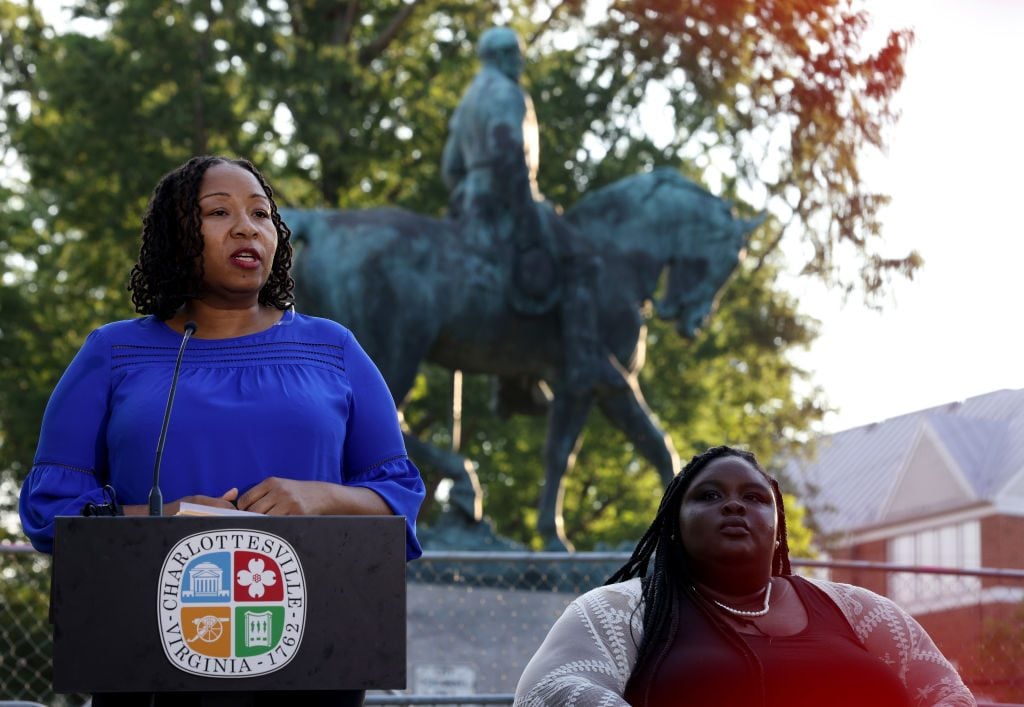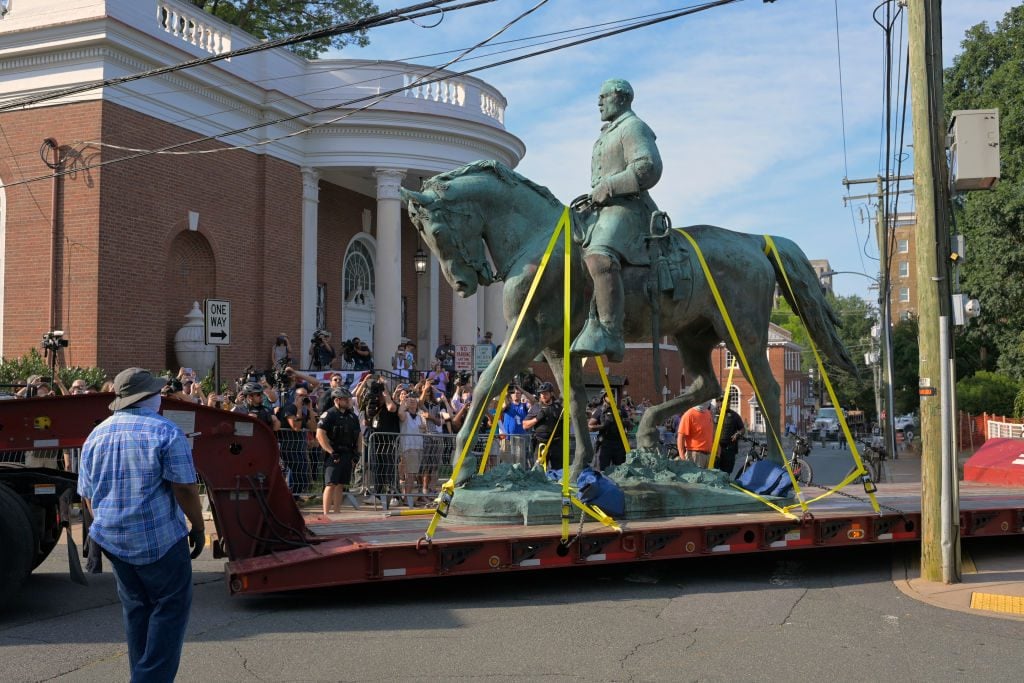Politics
The Infamous Charlottesville Statue of Robert E. Lee, Where Neo-Nazis Rallied Violently in 2017, Has Been Removed From View
Another monument, to Confederate general Thomas “Stonewall” Jackson, was also removed.

Another monument, to Confederate general Thomas “Stonewall” Jackson, was also removed.

Taylor Dafoe

The city of Charlottesville, Virginia, has removed its memorial to Confederate general Robert E. Lee, a central symbol in the ongoing debate over public statuary in the U.S.
The nearly 100-year-old monument was the site of a violent rally organized by Neo-Nazis in 2017.
Municipal workers took down the memorial and a similar one erected in honor of Thomas “Stonewall” Jackson, another Confederate general, during a public event Saturday, July 10. The two statues will remain in the care of the city until the Charlottesville council decides their fate.
“Taking down this statue is one small step closer to the goal of helping Charlottesville, Virginia, and America, grapple with the sin of being willing to destroy Black people for economic gain,” Charlottesville Mayor Nikuyah Walker said during the event, according to the Associated Press.

Charlottesville Mayor Nikuyah Walker, left speaking before the removal of the statue of Confederate General Robert E. Lee. Zyahna Bryant is on the right. Photo: Win McNamee/Getty Images.
With Walker was Zyahna Bryant, a 20-year-old activist who started the push to remove the Lee monument in 2016 with a widely circulated petition.
Bryant reflected on her role in the movement this week in a candid essay published by Teen Vogue.
“In the five years since I started my push to remove the statue of Confederate general Robert E. Lee in Charlottesville with a petition, I’ve had a lot of time to reflect on the concept of erasure, often feeling like I’m part of a pattern for Black women who look, sound, and act like me,” she wrote. “I find myself wondering if I’ll be recognized as the catalyst for this moment or forgotten by history.”
The Charlottesville city council first voted to remove the Lee statue in early 2017, following Bryant’s petition. But a subsequent lawsuit halted the action, claiming that the council’s decision violated a state law protecting Civil War-era monuments.

The statue of Robert E. Lee being moved. Photo: John McDonnell/The Washington Post via Getty Images.
The push for the removal fueled the August 11 Unite the Right Rally, when Neo-Nazis, white nationalists, and others convened on the grounds of the Lee monument, where they violently clashed with counter protestors. At least 30 people were injured in the altercations.
The following day, a self-identified white supremacist drove his car into a crowd of counter-protesters near the Lee statue, killing one person and injuring another 35.
In 2019, a Virginia Circuit Court maintained that the Lee and Jackson statues were protected by state law and could not be removed. That decision was ultimately overturned in April of this year by the state’s Supreme Court.
“In Charlottesville and everywhere, there is much work left to be done,” Bryant wrote in her essay. “My prayer is this: that Black women find the time and space to be human. To find rest. And to make pouring into their own cup a priority. This powerful moment in Charlottesville is a chance for me to do exactly that.”